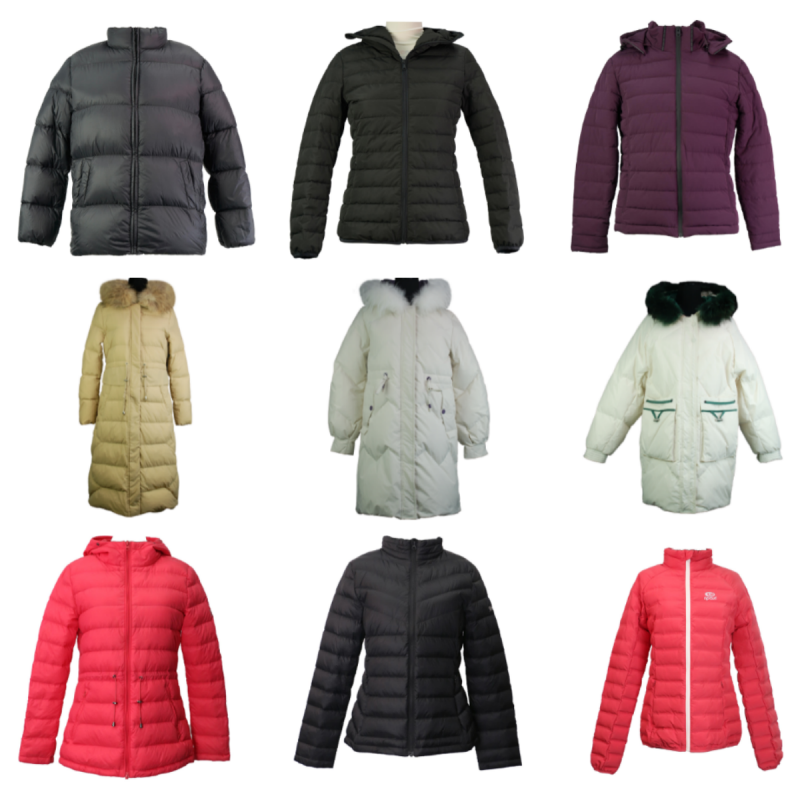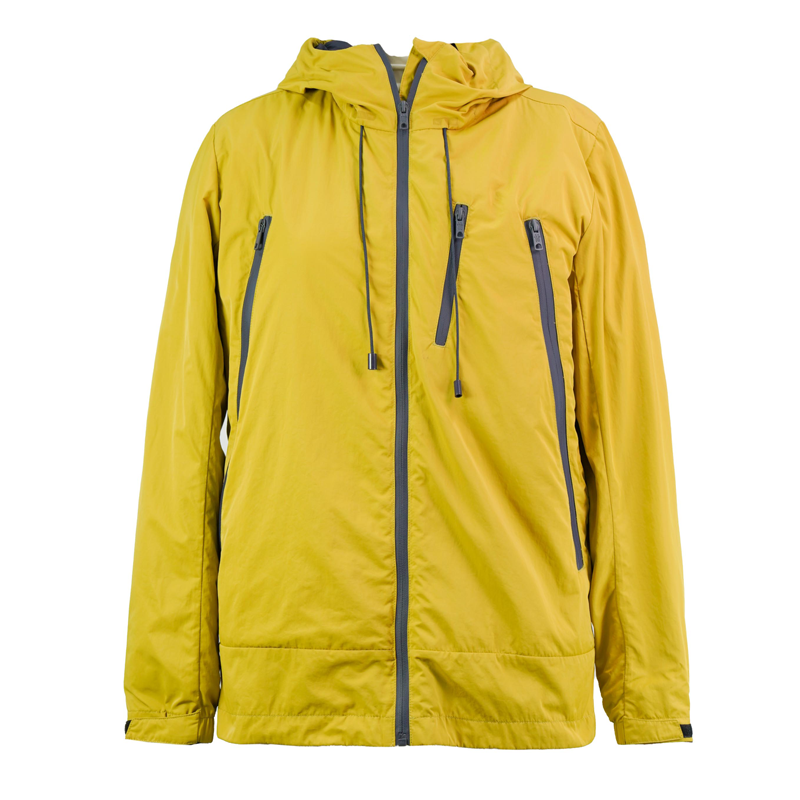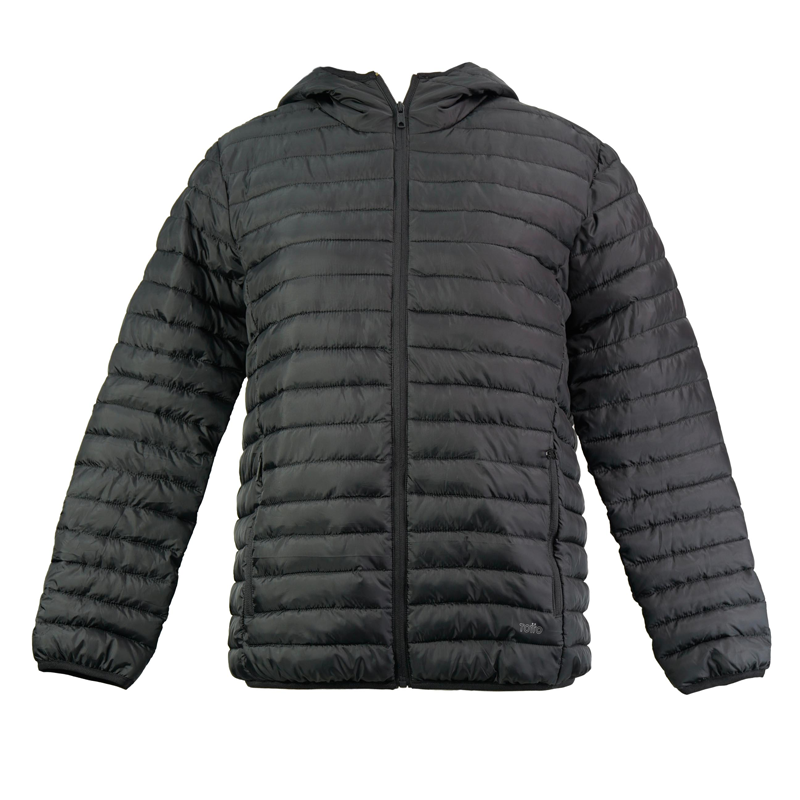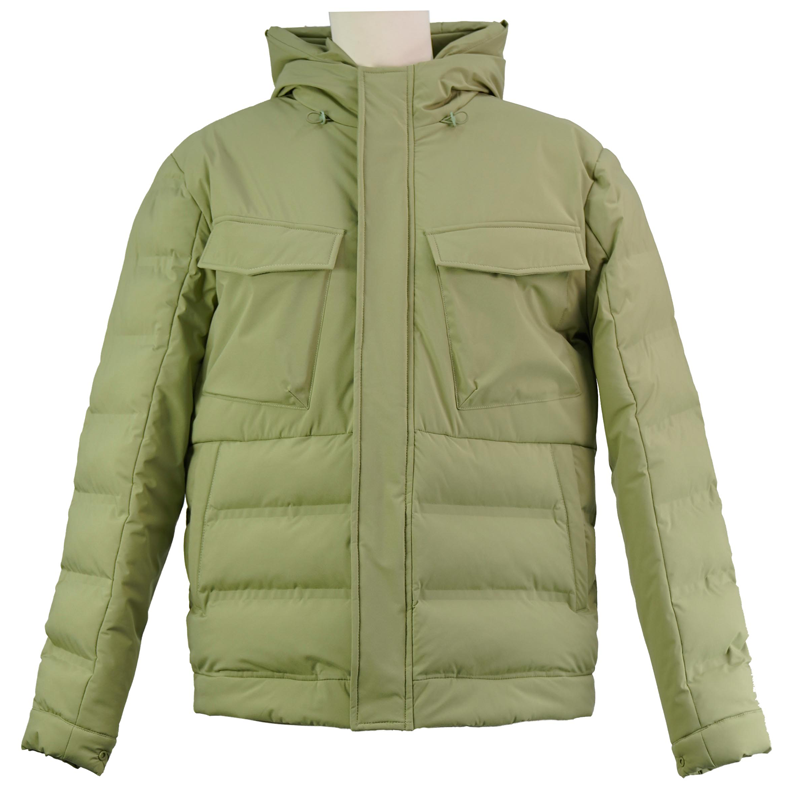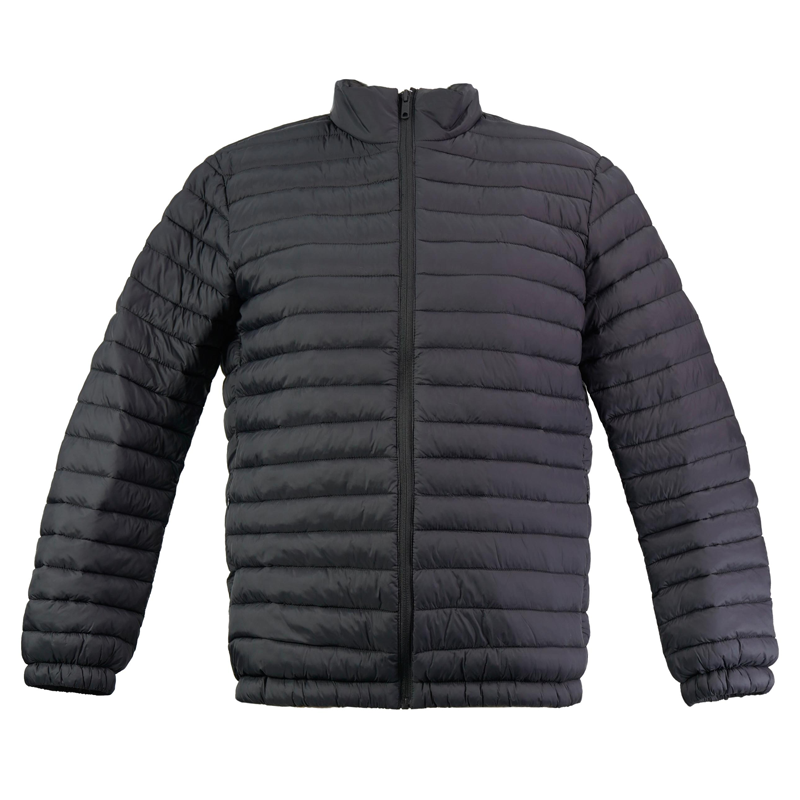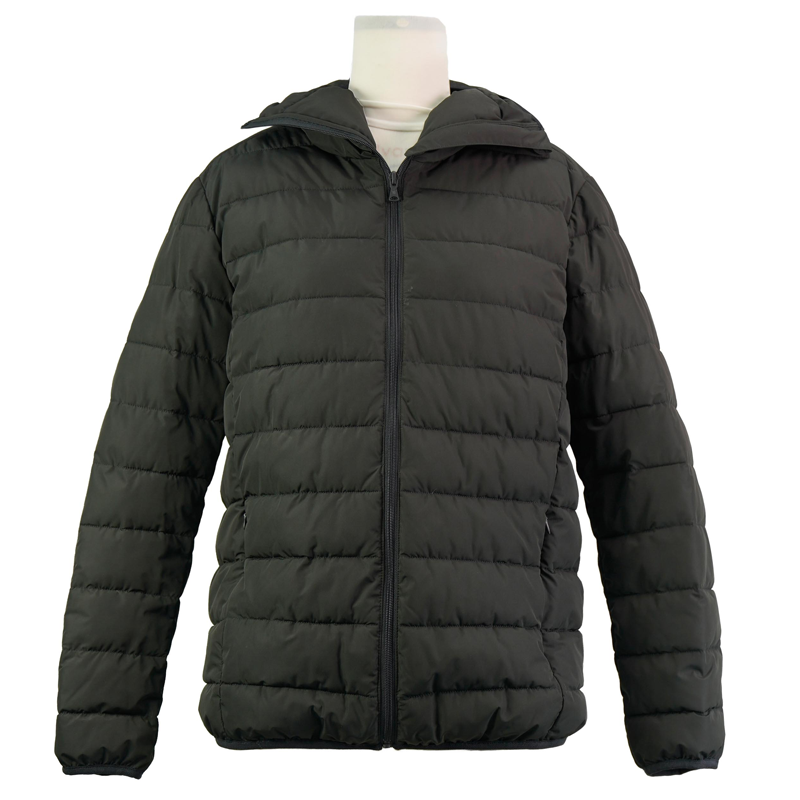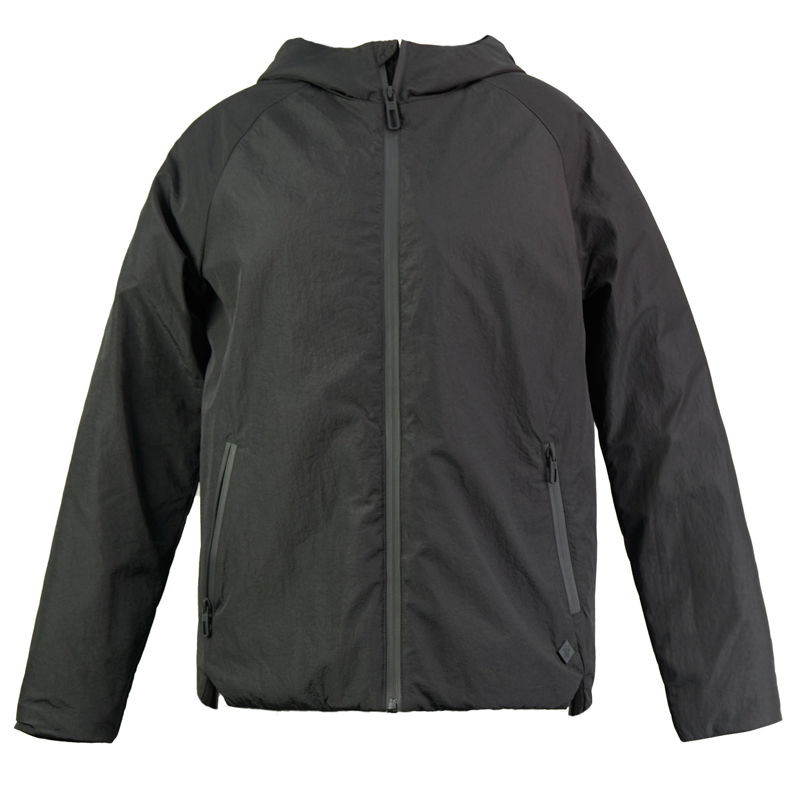When winter arrives, one of the biggest choices outdoor lovers and everyday consumers face is whether to buy a polyester jacket or a down jacket. Both have their unique features, warmth levels, durability, and environmental impact. But which one truly suits your lifestyle, climate, and budget?
In this article, we’ll explore the differences between polyester and down jackets from scientific, technical, and practical perspectives — supported by research data. At the end, we’ll introduce JIANGSU OVERSEAS FAREAST INDUSTRIAL CO., LTD., a professional garment manufacturer known for its advanced jacket production lines and sustainable fashion solutions.
Overview: Polyester Jacket vs Down Jacket
| Feature | Polyester Jacket | Down Jacket |
|---|---|---|
| Insulation Material | Synthetic polyester fibers (e.g. polyfill) | Natural down feathers (goose or duck) |
| Warmth-to-Weight Ratio | Moderate | Excellent |
| Water Resistance | High | Low (unless treated) |
| Durability | High | Moderate |
| Maintenance | Easy to wash | Needs careful cleaning |
| Price Range | Affordable | Expensive |
| Sustainability | Often made from recycled polyester | Natural but involves animal products |
Summary:
Polyester jackets perform well in wet and humid environments and require low maintenance. Down jackets, on the other hand, are unbeatable for warmth in cold, dry conditions but require careful handling.
We combine the advantages of polyester and down, filling the polyester interior with down, which provides both the waterproof properties of polyester and excellent warmth.
Understanding Polyester Jackets
Polyester jackets are insulated with synthetic fibers such as polyfill, Thinsulate™, or PrimaLoft®, which mimic the structure of natural down. Polyester is a man-made polymer derived mainly from petroleum-based sources, but modern textiles often use recycled polyester (rPET) from plastic bottles — making them more sustainable.
Key Advantages of Polyester Jackets
Moisture Resistance: Synthetic insulation keeps its warmth even when wet.
Quick Drying: Polyester fibers repel water and dry faster than natural down.
Low Maintenance: Machine washable, resistant to mildew, and easier to store.
Affordable: Lower cost of materials and production.
Allergy-Free: Hypoallergenic, suitable for people sensitive to animal feathers.
Data Table: Synthetic Insulation Performance
| Parameter | Polyester Jacket | Research Source |
|---|---|---|
| Warmth Retention when Wet | 80–85% | Patagonia Synthetic Insulation Report (2022) |
| Drying Time | 2–3 hours | OutdoorGearLab Test (2023) |
| Lifespan (avg use) | 5–7 years | Textile Performance Review (2023) |
Insight: Synthetic insulation maintains warmth even when soaked, making it ideal for rainy, humid, or coastal environments.
Our jackets are typically made of polyester and filled with down, 3M Thinsulate™, or other materials. You can give us your ideas; we support customization.
To learn about the differences between 3M Thinsulate and down jackets, please see: 3M Thinsulate Jackets vs Down Jackets
Understanding Down Jackets
Down jackets are filled with the fine under-feathers of ducks or geese, providing an unbeatable warmth-to-weight ratio. The quality of down is measured by fill power, which represents the volume (in cubic inches) that one ounce of down occupies. Higher fill power means better insulation and compression.
Advantages of Down Jackets
Superior Warmth: Retains heat more efficiently than synthetic insulation.
Lightweight: Excellent warmth without bulk.
Highly Compressible: Easy to pack for travel and outdoor adventures.
Long Lifespan: Can last 10–15 years with proper care.
Data Table: Down Jacket Performance
| Fill Power | Warmth Level | Suitable Temperature Range | Durability (Years) |
|---|---|---|---|
| 550–650 | Moderate | 0°C to 10°C | 8–10 |
| 700–800 | High | -10°C to 5°C | 10–12 |
| 850+ | Premium | -20°C and below | 12–15 |
Insight: A high-fill-power down jacket is ideal for mountaineering, skiing, or extreme winter conditions.
Here are some of our down jacket products:
Double channel fabric medium weight puffer coats womens stylish daily warmest winter jacket for fall
Heavy classical windproof best winter jackets womens puffer jacket with hood for cold weather
Warmth Comparison: Scientific Perspective
A study by the U.S. Army Natick Research Center (2021) found that down insulation offers 2.5 times more warmth per gram than synthetic fibers under dry conditions. However, when moisture was introduced, synthetic polyester retained 90% of insulation, while down lost over 50%.
| Test Condition | Down Jacket Warmth Retention | Polyester Jacket Warmth Retention |
|---|---|---|
| Dry Climate | 100% | 90% |
| Humid Climate | 70% | 88% |
| Wet Condition | 45% | 80% |
Conclusion:
Down performs best in cold and dry climates, whereas polyester is superior in wet and humid weather.
Breathability and Comfort
Breathability refers to how well a jacket allows moisture vapor to escape from your body. Down provides natural air pockets that allow efficient thermal regulation, but when encased in water-resistant fabric, breathability may decrease. Polyester insulation, depending on its structure (e.g., PrimaLoft® Gold), offers adjustable breathability for active wear.
| Factor | Down Jacket | Polyester Jacket |
|---|---|---|
| Breathability | High (natural) | Moderate–High (depends on fiber type) |
| Comfort in Movement | High | High |
| Wind Resistance | Low (needs shell) | High (integrated in fabric) |
Environmental Impact: Sustainability Comparison
As sustainability becomes central to the fashion industry, the environmental cost of insulation materials matters.
| Impact Category | Down | Polyester |
|---|---|---|
| Source | Animal (goose/duck) | Petroleum or recycled plastic |
| Carbon Footprint | Lower (natural origin) | Higher (synthetic) |
| Ethical Concerns | Animal welfare (feather collection) | Microplastic pollution |
| Recycling | Difficult | Easy (rPET polyester) |
Research Data:
Recycled polyester reduces greenhouse gas emissions by up to 32% compared to virgin polyester (Textile Exchange 2023).
The Responsible Down Standard (RDS) ensures that down is ethically sourced without live-plucking or force-feeding.
Verdict: Both materials have environmental trade-offs, but recycled polyester and RDS-certified down are leading sustainable options.
Cost and Maintenance Analysis
Cost and care are practical considerations for consumers. Polyester jackets are significantly cheaper upfront and easier to maintain, while down jackets, though expensive, offer long-term value.
| Category | Polyester Jacket | Down Jacket |
|---|---|---|
| Average Price | $50–$150 | $150–$400 |
| Cleaning | Machine wash | Professional dry clean |
| Storage | Easy | Requires ventilation |
| Cost Efficiency | High | Moderate |
Tip: If you live in a damp or rainy region, a polyester jacket provides better long-term usability and lower maintenance costs.
Applications and Suitability by Environment
| Environment Type | Recommended Jacket Type | Reason |
|---|---|---|
| Wet & Humid (e.g., UK, Pacific NW) | Polyester Jacket | Retains warmth when wet |
| Cold & Dry (e.g., Canada, Russia) | Down Jacket | Maximum warmth-to-weight ratio |
| Urban Winter (Moderate Cold) | Polyester Jacket | Practical and affordable |
| Extreme Outdoor Sports | Down Jacket (high fill power) | High insulation needed |
Global Market Insights: Jacket Trends
According to Grand View Research (2024), the global winter jacket market size reached USD 40.2 billion in 2023 and is projected to grow at a CAGR of 6.1% from 2024–2030. Synthetic insulated jackets are leading the growth due to rising demand for vegan and weatherproof alternatives.
| Segment | Market Share (2023) | Expected Growth (2030) |
|---|---|---|
| Polyester/Synthetic Jackets | 52% | 6.7% CAGR |
| Down Jackets | 36% | 5.4% CAGR |
| Others (blended insulation) | 12% | 6.0% CAGR |
Trend Insight:
Synthetic insulated jackets (especially polyester) are expected to dominate future markets due to sustainability, affordability, and evolving textile technologies.
Case Study: Combining Functionality and Fashion
Modern consumers demand both style and performance. Leading brands like The North Face and Patagonia now integrate hybrid insulation — blending down and synthetic fibers — to combine warmth and weather resistance.
JIANGSU OVERSEAS FAREAST INDUSTRIAL CO., LTD. has also adopted this hybrid concept in its production lines, offering global brands versatile jacket solutions with premium design, high functionality, and sustainable material sourcing.
Why Choose JIANGSU OVERSEAS FAREAST INDUSTRIAL CO., LTD.
Founded in 2016, JIANGSU OVERSEAS FAREAST INDUSTRIAL CO., LTD. is a major subsidiary of JIANGSU OVERSEAS GROUP CO., LTD. (JOC Group). The company is a leading garment and textile exporter integrating design, processing, production, and global sales.
Key Strengths
Full Production Chain: From fabric sourcing to final jacket assembly.
Large Capacity: Over 10 garment production lines and 80,000 pieces per month.
Global Reach: Factories in China, Myanmar, Vietnam, and Cambodia, employing over 4,000 skilled workers.
Quality Certifications: BSCI and WRAP certified.
Design & R&D Centers: Continuous innovation in materials, insulation, and style.
Product Capabilities
Polyester Insulated Jackets: Lightweight, durable, and ideal for all-weather wear.
Down Jackets: Premium warmth, suitable for cold-climate customers.
Hybrid Jackets: Combining synthetic and natural insulation for balanced performance.
By integrating sustainability and advanced technology, JIANGSU OVERSEAS FAREAST INDUSTRIAL CO., LTD. provides fashion-forward, high-performance outerwear trusted by clients across Europe, the USA, and Australia.
If you’re seeking a reliable garment manufacturing partner with flexible capacity, ethical standards, and world-class quality — we invite you to collaborate with us.
Contact us today to explore jacket manufacturing solutions that meet your brand’s unique design and performance requirements.
Final Verdict: Which Jacket Should You Buy?
| Factor | Best Choice |
|---|---|
| Cold & Dry Climate | Down Jacket |
| Wet & Humid Climate | Polyester Jacket |
| Budget-Friendly Option | Polyester Jacket |
| Long-Term Durability | Down Jacket |
| Easy Maintenance | Polyester Jacket |
| Eco-Friendly Choice | Recycled Polyester or RDS Down |
Conclusion:
Both polyester and down jackets have their advantages. If you prioritize lightweight warmth and luxury feel, choose down. If you value affordability, moisture resistance, and easy care, polyester is ideal. For many modern consumers, hybrid jackets — featuring the best of both worlds — are becoming the most popular option.
